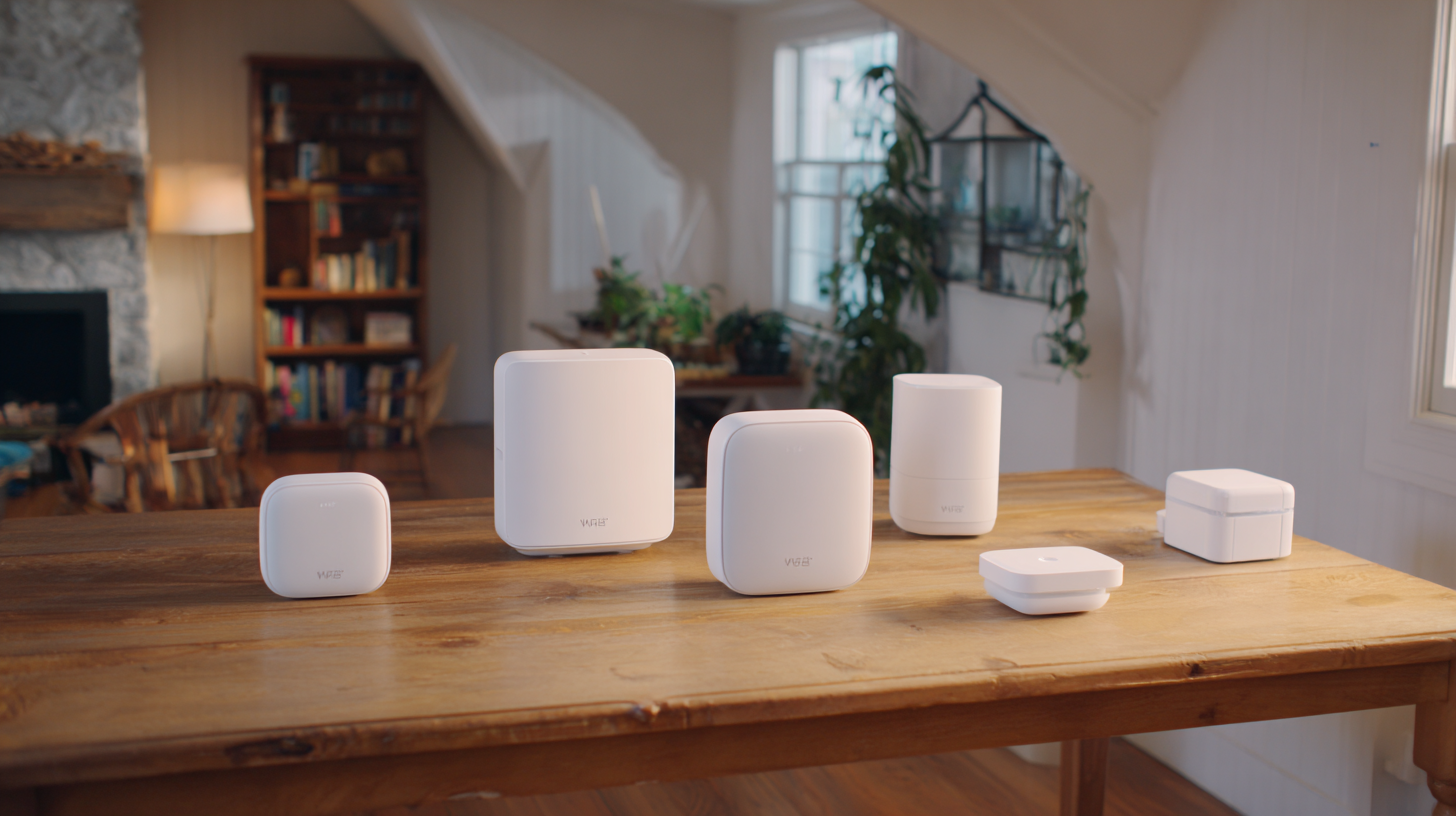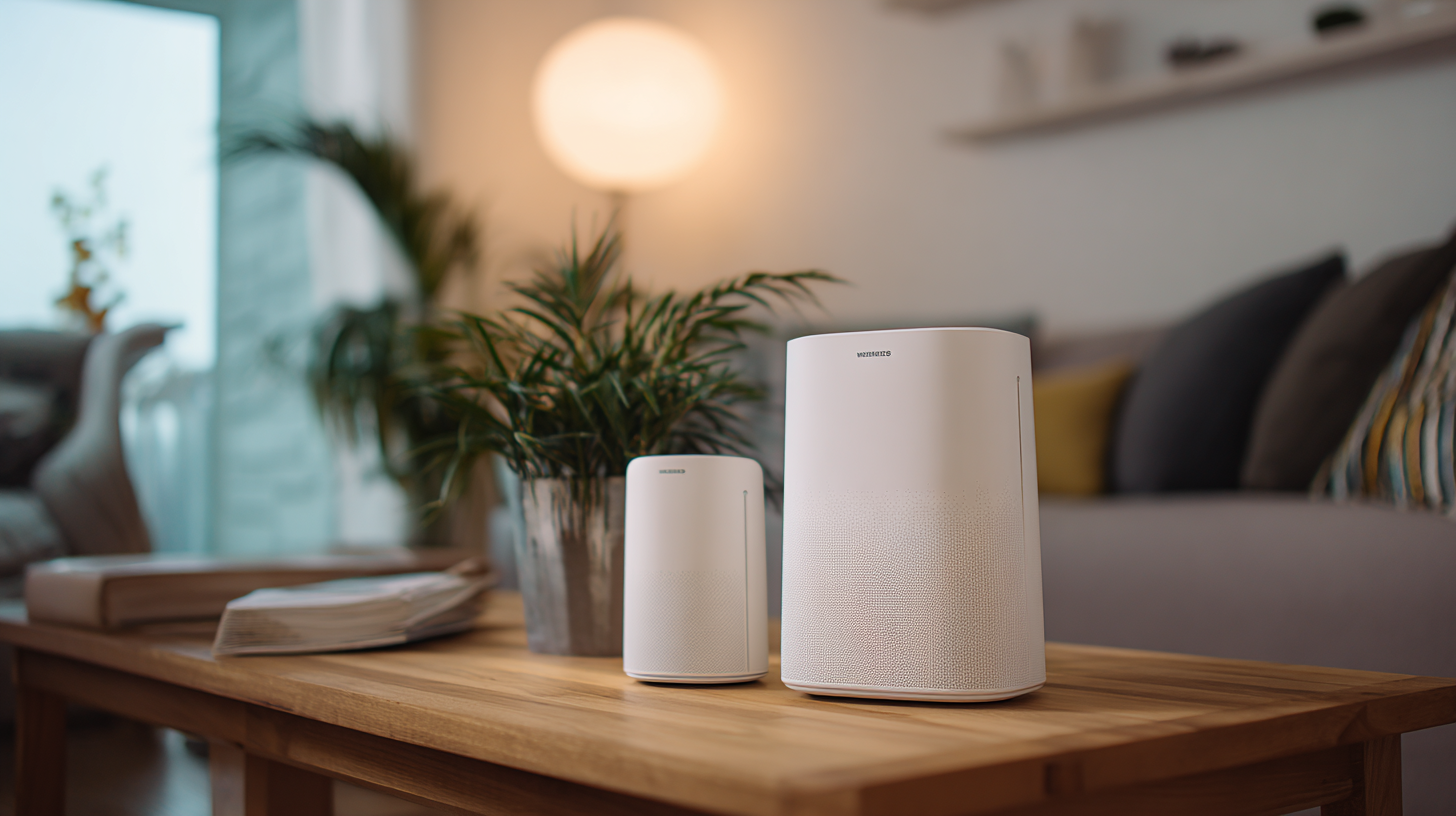In today’s fast-paced digital world, having a reliable and fast internet connection is more important than ever. As more devices connect to our home networks, traditional routers often struggle to provide comprehensive coverage. This is where a Mesh Router System comes into play. Unlike conventional routers that emit a single signal, a mesh system utilizes multiple nodes strategically placed throughout your space, ensuring seamless Wi-Fi coverage in every corner of your home.

Choosing the best Mesh Router System can seem daunting given the myriad options available, but understanding your individual needs and the specific features of these systems can simplify the decision-making process. Whether you have a sprawling home or a compact apartment, the right mesh system can eliminate dead zones, enhance internet speed, and support numerous connected devices without compromising performance. In this guide, we will explore key factors to consider when selecting a mesh router, helping you create an optimal home network that meets your lifestyle demands.
When it comes to choosing the best mesh router system for seamless Wi-Fi coverage in your home, there are several critical factors to consider. One of the most important aspects is coverage area. According to a report by the International Data Corporation (IDC), the average American home is about 2,600 square feet, which requires a robust mesh system to ensure uniform coverage. It's vital to choose a system that fits the size of your home, as different models offer varying coverage ranges, often between 3,000 to 6,000 square feet.
Another significant factor is the number of concurrent users. The average household now contains at least 11 devices connected to the internet, as per a study by the Pew Research Center. This means a mesh router system must handle multiple streams simultaneously without lag or buffering. Look for systems with advanced technologies like MU-MIMO (Multi-User Multiple Input Multiple Output) which can help enhance performance as more devices connect to your network.
Tips: Consider systems that offer easy app support for network management and guest access. Additionally, prioritize routers with automatic firmware updates to ensure optimal security and performance over time. Don't forget to check compatibility with your internet service to maximize your experience.
When choosing a mesh router system for seamless Wi-Fi coverage, several key features should be prioritized to ensure high performance. First and foremost, look for a system that offers dual-band or tri-band capabilities. Dual-band routers operate on both 2.4 GHz and 5 GHz frequencies, allowing for better distribution of bandwidth and reducing congestion, while tri-band options provide an additional 5 GHz band, ideal for handling multiple devices simultaneously without sacrificing speed.
Another crucial feature is the ease of setup and management. High-quality mesh routers often come with intuitive mobile apps that guide users through the installation process and allow for easy management of connected devices. These apps typically include features like parental controls, guest network setup, and speed testing, enhancing user experience. Additionally, consider the range and scalability of the mesh system; a robust system should easily cover larger homes and allow for the addition of extra nodes without complicated configurations. Look for systems that employ advanced technologies like beamforming and MU-MIMO, which optimize the Wi-Fi signal and ensure multiple devices can connect efficiently.

When selecting a mesh router system for optimal Wi-Fi coverage, it’s essential to evaluate various brands and their offerings. Popular options include Google Nest Wifi, Eero, and Netgear Orbi, all of which cater to different needs and budgets. According to a recent survey by TechRadar, Google Nest Wifi leads in user satisfaction due to its user-friendly setup and app functionality, receiving an impressive 4.7 out of 5 stars from an audience of over 4,000 users. On the other hand, Eero’s system is noted for its robust integration with smart home devices, maintaining a reputation for reliability in speed and coverage.

Netgear Orbi stands out with its advanced features, such as dedicated backhaul for faster data speeds. In a detailed performance analysis by PCMag, Orbi was found to provide the highest throughput at 600 Mbps over distances of 150 feet — a crucial factor for larger homes. Additionally, a report from Consumer Reports indicates that mesh networks reduce dead zones by up to 90%, making them a vital investment for families relying on multiple devices. With these insights, comparing popular mesh router brands becomes clearer, enabling consumers to make informed choices tailored to their specific Wi-Fi needs.
When selecting the best mesh router system for seamless Wi-Fi coverage, understanding the coverage area and performance requirements is crucial. According to a report by the NPD Group, 83% of consumers prioritize Wi-Fi coverage over other features when choosing home networking solutions. This emphasizes the importance of evaluating the square footage that your mesh system needs to cover, particularly in larger homes or those with multiple levels. Typically, a single-router setup is effective for spaces up to 1,500 square feet, but mesh systems can effectively extend Wi-Fi coverage to areas exceeding 5,000 square feet depending on the number and placement of nodes.
Performance requirements cannot be overlooked either. Data from the Wi-Fi Alliance highlights that with the growing demand for high-bandwidth activities such as 4K streaming and online gaming, mesh systems that support Wi-Fi 6 can significantly enhance the user experience. These systems not only improve speed but also offer better handling of multiple devices—up to four times more than previous Wi-Fi standards. In environments where numerous devices connect simultaneously, such as families with smartphones, tablets, and smart home devices, investing in a mesh system with adequate performance metrics can ensure consistent coverage and speed across your home.
| Mesh Router System | Coverage Area (Sq Ft) | Max Devices Supported | Speed (Mbps) | Key Features |
|---|---|---|---|---|
| System A | 5,000 | 50 | 300 | Dual-Band, App Control |
| System B | 4,000 | 40 | 400 | Tri-Band, Voice Control |
| System C | 6,000 | 60 | 500 | Mesh Technology, Security Features |
| System D | 3,000 | 30 | 200 | Extended Range, Easy Setup |
When considering a mesh router system for seamless Wi-Fi coverage, budgeting plays a crucial role in determining the right fit for your home. First, assess your internet needs and the size of your household. Mesh systems often come in various price ranges, starting from more affordable options suitable for smaller spaces to higher-end models designed for larger homes with multiple devices. Establishing a clear budget helps narrow down choices and ensures you invest in a system that meets your coverage needs without overspending.
Next, consider the additional features that may influence your decision. Some systems offer advanced functionalities such as parental controls, guest networks, and integration with smart home devices. While these features can enhance your overall network experience, they often come with a higher price tag. Weigh the importance of these extras against your budget constraints. By prioritizing essential features that align with your household's usage patterns, you can make an informed choice and select a mesh router system that provides both performance and value for your investment.








